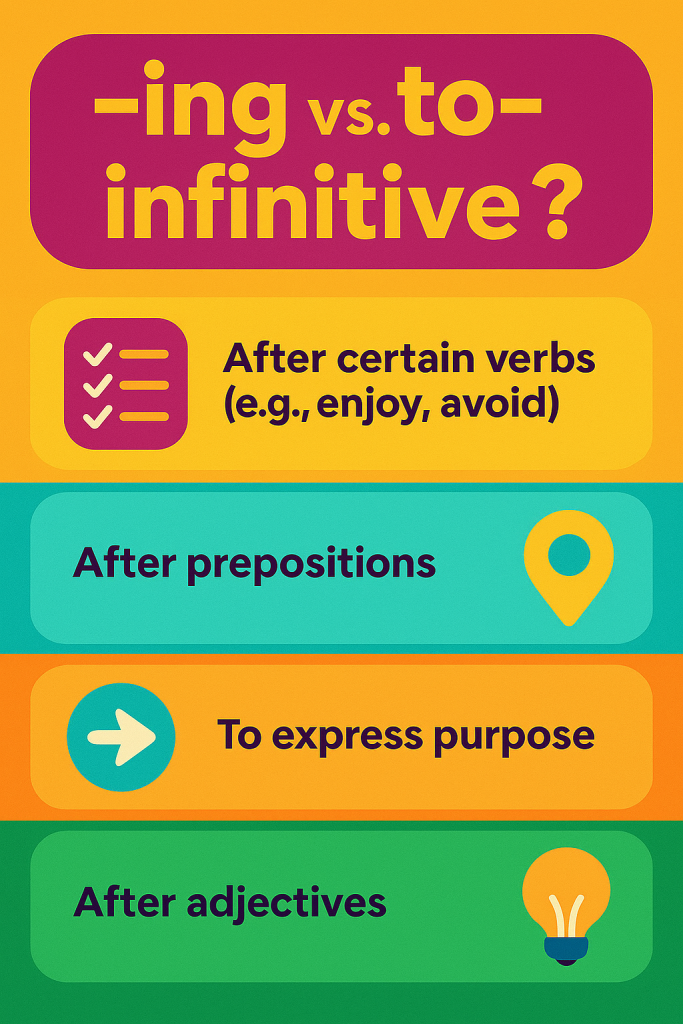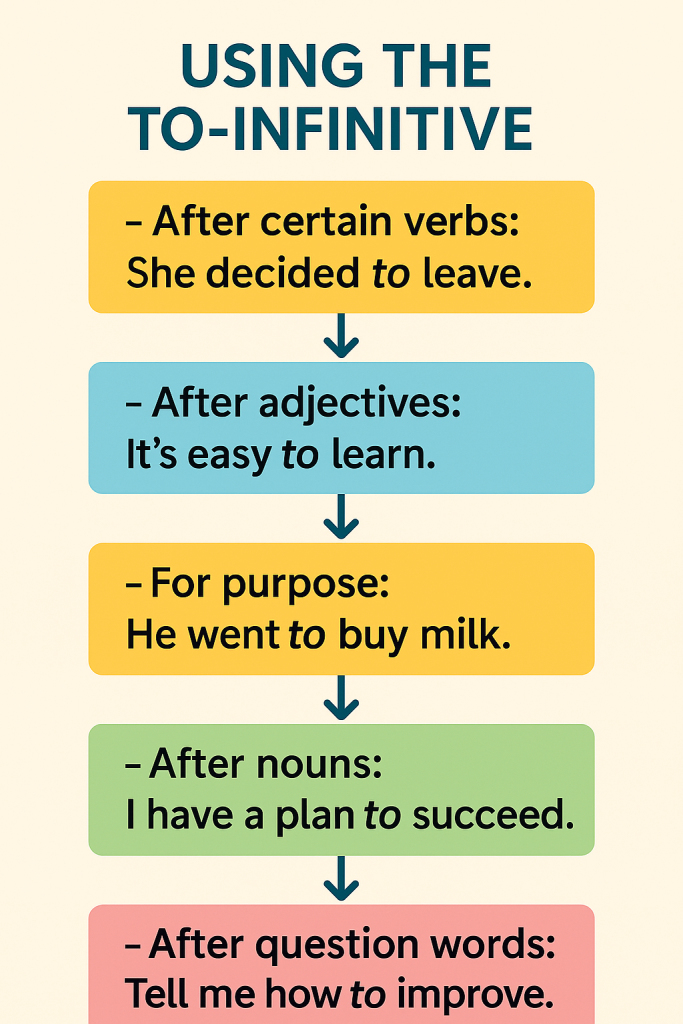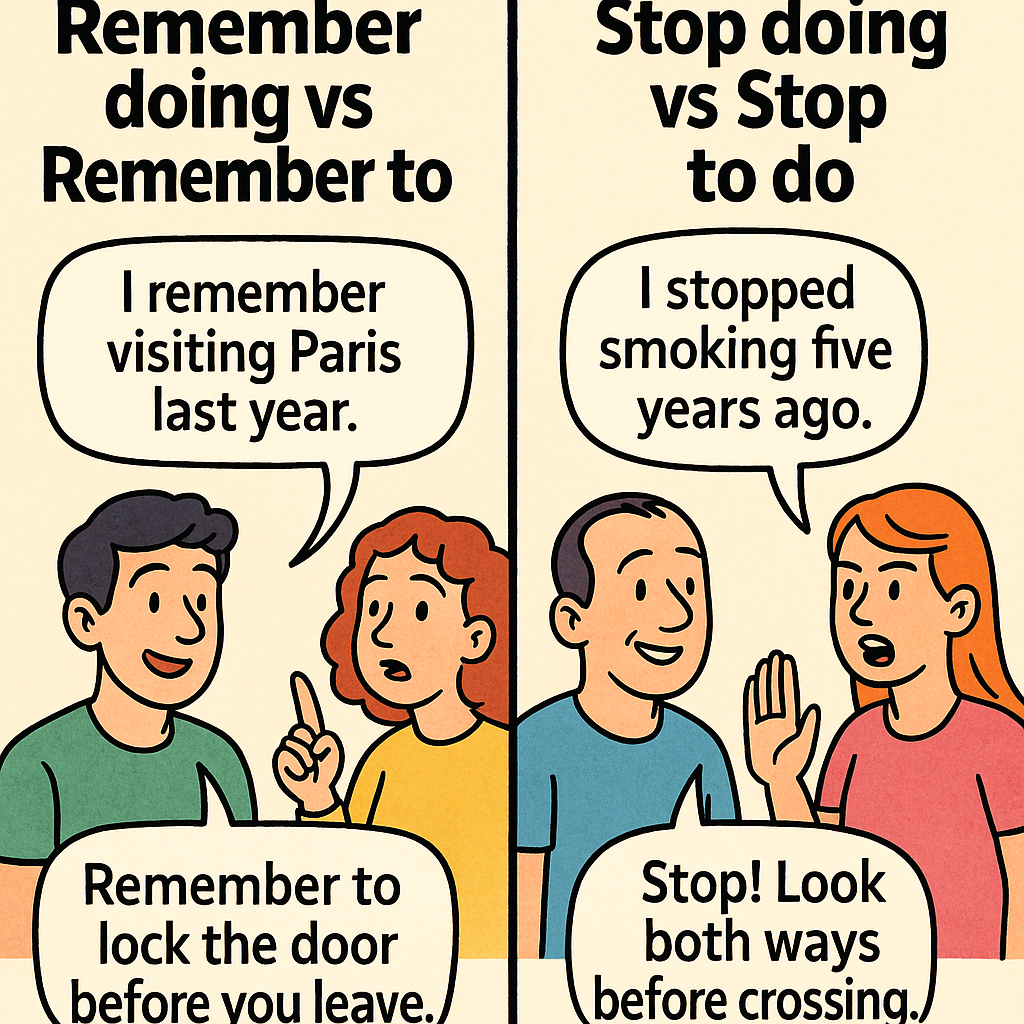You’ve been down this road before. You write I enjoy to swim, stare at it like it’s some cryptic hieroglyph, then realize—nope. It should be I enjoy swimming.

Welcome to the wonderful, endlessly torturous world of gerunds vs infinitives. If you’re a grammar nerd, a tortured learner, or an English teacher with gray hairs to prove it, this guide clarifies when to bend a verb into –ing and when to slap a “to” in front of it. Spoiler: there’s a method to the madness.
What on earth is a Gerund? And why should I care?
A gerund is a verb turned into a noun by tacking on –ing. Think of it as a shapeshifter: run → running, eat → eating. Use it when you need a noun-ish action:
- Subject of a sentence Swimming keeps me sane (or as sane as you can be).
- Object after certain verbs (enjoy, avoid, consider…) They avoid talking to me after midnight.
- After prepositions (interested in, good at, tired of…) She’s good at memorizing song lyrics no one asked for.
Need more on simple sentence structures before diving deeper? Check out Simple Sentences in English to see how gerunds play nicely with basic sentence patterns.
For an authoritative overview, see the section on gerunds at the Cambridge Dictionary.
To-Infinitive: The “to + verb” that makes you groan

The to-infinitive is just that: to + the base verb. It often signals purpose, intent, or that someone is about to do something. Use it when:
- After certain verbs (want, decide, hope, plan…) I plan to binge-watch every true-crime doc this weekend.
- After adjectives (happy to, eager to…) He was eager to impress, despite leaking sweat.
- To express purpose She called to ask how pathetic I looked.
If you’re still shaky on when a “to” truly becomes an infinitive marker, you might want to brush up with Advanced Grammar Tips for Non-Native Speakers—it’s like a superhero manual for your sentences.
The showdown: Gerund vs. Infinitive
| Feature | Gerund (–ing) | Infinitive (to + V) |
|---|---|---|
| Noun-like use | ✔︎ (Jogging is healthy.) | ❌ |
| Expressing purpose | ❌ | ✔︎ (I went outside to breathe fresh air.) |
| Follows certain verbs | enjoy, avoid, consider, mind | want, decide, hope, plan |
| After prepositions | interested in doing, good at doing | — |
Use this cheat-sheet next time your brain fries. No more panicked Google searches at 2 AM.
Common blunders: Those pesky pairs

Remember doing vs. Remember to do
- Remember + –ing → you recall a past action I remember locking the door.
- Remember to + V → don’t forget that you need to do it Remember to lock the door on your way out.
Stop doing vs. Stop to do
- Stop + –ing → quit an activity She stopped smoking.
- Stop to + V → pause one action in order to start another She stopped to smoke a cigarette.
Pro tip: If you find yourself hesitating between –ing and to + V, ask: “Am I talking about a past habit or a purpose right now?”
Quick-and-dirty practice hacks
- Verb Lists
- Gerund verbs: enjoy, avoid, finish, suggest, imagine…
- Infinitive verbs: want, decide, agree, promise, refuse…
- Sticky Notes Drill
- Write “enjoy” on one note, “to watch” on another. Shuffle and sort into Gerund vs. Infinitive piles.
- Sentence-salad
- Pick 5 random verbs from your reading, then write one sentence with –ing and one with to + V. Marvel at your own genius.
- Preposition pairing
- Make collocation cards: interested in ____ing, happy to ____, then quiz yourself while pretending you’re on a cooking show.
Conclusion
Gerunds and infinitives may seem like the villain duo of English grammar, but armed with these rules (and a healthy dose of sarcasm), you’ll whip them into shape. Next time you hesitate between I love dancing and I love to dance, remember: both can be right—unless you’re after a specific nuance. Now go forth, make mistakes, learn, and lord it over your friends who still type I want going.
